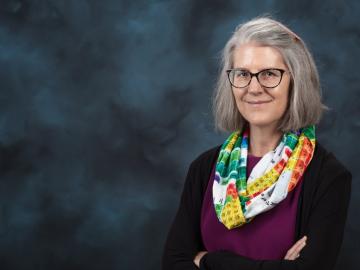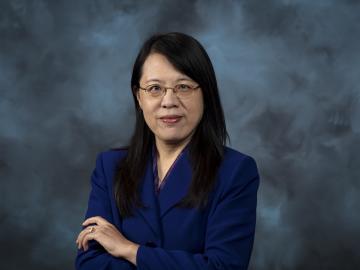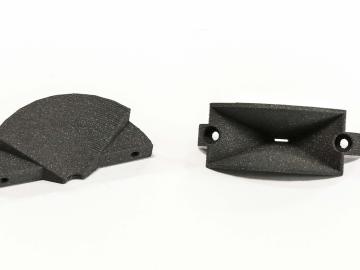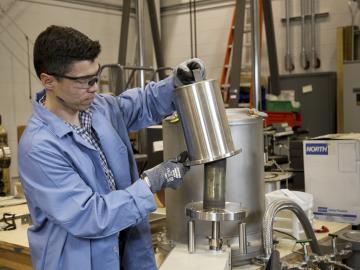
Filter News
Area of Research
- (-) Energy Science (47)
- (-) Fusion and Fission (4)
- (-) National Security (23)
- (-) Nuclear Science and Technology (6)
- Advanced Manufacturing (3)
- Biology and Environment (16)
- Computational Biology (1)
- Computer Science (2)
- Isotopes (22)
- Materials (49)
- Materials for Computing (8)
- Neutron Science (97)
- Supercomputing (51)
News Type
News Topics
- (-) Artificial Intelligence (18)
- (-) Isotopes (5)
- (-) Machine Learning (15)
- (-) Neutron Science (16)
- (-) Transportation (36)
- 3-D Printing/Advanced Manufacturing (56)
- Advanced Reactors (13)
- Big Data (5)
- Bioenergy (26)
- Biology (13)
- Biomedical (7)
- Biotechnology (4)
- Buildings (19)
- Chemical Sciences (15)
- Clean Water (4)
- Composites (7)
- Computer Science (34)
- Coronavirus (11)
- Critical Materials (4)
- Cybersecurity (23)
- Education (1)
- Energy Storage (46)
- Environment (36)
- Exascale Computing (3)
- Fossil Energy (2)
- Frontier (2)
- Fusion (28)
- Grid (25)
- High-Performance Computing (9)
- Hydropower (1)
- ITER (4)
- Materials (24)
- Materials Science (24)
- Mathematics (1)
- Mercury (2)
- Microelectronics (1)
- Microscopy (7)
- Molten Salt (2)
- Nanotechnology (9)
- National Security (36)
- Nuclear Energy (53)
- Partnerships (17)
- Physics (5)
- Polymers (6)
- Quantum Science (3)
- Security (15)
- Simulation (5)
- Space Exploration (5)
- Summit (5)
Media Contacts

Deborah Frincke, one of the nation’s preeminent computer scientists and cybersecurity experts, serves as associate laboratory director of ORNL’s National Security Science Directorate. Credit: Carlos Jones/ORNL, U.S. Dept. of Energy

Through a consortium of Department of Energy national laboratories, ORNL scientists are applying their expertise to provide solutions that enable the commercialization of emission-free hydrogen fuel cell technology for heavy-duty

Xin Sun has been selected as the associate laboratory director for the Energy Science and Technology Directorate, or ESTD, at the Department of Energy’s Oak Ridge National Laboratory.

The ExOne Company, the global leader in industrial sand and metal 3D printers using binder jetting technology, announced it has reached a commercial license agreement with Oak Ridge National Laboratory to 3D print parts in aluminum-infiltrated boron carbide.

As program manager for the Department of Energy’s Oak Ridge National Laboratory’s Package Testing Program, Oscar Martinez enjoys finding and fixing technical issues.

Six scientists at the Department of Energy’s Oak Ridge National Laboratory were named Battelle Distinguished Inventors, in recognition of obtaining 14 or more patents during their careers at the lab.

Oak Ridge National Laboratory researchers have developed a new family of cathodes with the potential to replace the costly cobalt-based cathodes typically found in today’s lithium-ion batteries that power electric vehicles and consumer electronics.

As ORNL’s fuel properties technical lead for the U.S. Department of Energy’s Co-Optimization of Fuel and Engines, or Co-Optima, initiative, Jim Szybist has been on a quest for the past few years to identify the most significant indicators for predicting how a fuel will perform in engines designed for light-duty vehicles such as passenger cars and pickup trucks.

Six ORNL scientists have been elected as fellows to the American Association for the Advancement of Science, or AAAS.

Soteria Battery Innovation Group has exclusively licensed and optioned a technology developed by Oak Ridge National Laboratory designed to eliminate thermal runaway in lithium ion batteries due to mechanical damage.


